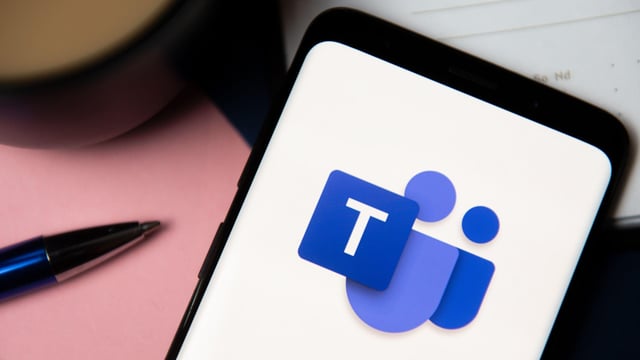Is Your Boss About to Know More Than Ever? Microsoft Teams’ New Location Tracking Sparks Debate
Big Brother is watching…or at least, that’s the feeling many are getting with the latest update rolling out to Microsoft Teams. Starting this December, Teams will reportedly begin sharing your location status with your boss, indicating whether you’re working in the office or remotely. This move has ignited a fiery debate about employee privacy, trust, and the evolving landscape of hybrid work. Is this a helpful tool for managing teams, or a step too far into surveillance territory?
The information comes from a recent report highlighting the upcoming feature. While Microsoft hasn’t officially framed it as “snitching,” the functionality effectively allows managers to see where their team members are physically located during working hours. The implications, depending on your perspective, are either incredibly useful or deeply unsettling.
How Will This “Location Snitching” Work?
The specifics of how this feature will function are still unfolding, but here’s what we know based on available information. Teams will leverage location services on your devices – likely your computer and mobile phone – to determine your whereabouts. This information will then be visible to your manager within the Teams interface.
It’s important to distinguish between simply knowing if you are in the office and tracking your precise movements. The aim isn’t to create a minute-by-minute map of your day; rather, it’s designed to verify whether you’re adhering to company policies regarding in-office work. For example, if your company mandates three days a week in the office, Teams could theoretically confirm your compliance. It’s also plausible the system could integrate with office check-in systems.
However, the potential for creepiness is undeniable. Even without detailed tracking, the knowledge that your location is being shared can create a sense of unease. Concerns about micromanagement and a lack of trust are already being voiced across various online forums, including a lively Reddit thread discussing the implications of this feature.
The Good, the Bad, and the Potentially Ugly: Examining the Pros and Cons
Like any new technology, there are arguments to be made for and against this location tracking functionality. Let’s break down the potential benefits and drawbacks:
The Potential Benefits:
- Improved Team Coordination: Knowing who is in the office can facilitate spontaneous collaborations and in-person meetings. A manager might be able to quickly identify colleagues who can assist with a particular project.
- Better Resource Allocation: Understanding office attendance patterns could help companies optimize space utilization and resource allocation. For example, they might identify days with low attendance and adjust cleaning schedules or utilities accordingly.
- Policy Enforcement: Companies with mandatory in-office policies can use this feature to ensure compliance, potentially leading to a more equitable work environment where everyone is adhering to the same rules.
The Potential Drawbacks:
- Erosion of Trust: Employees might feel that their employer doesn’t trust them to do their jobs effectively without constant surveillance. This can lead to decreased morale and productivity.
- Privacy Concerns: Even if the tracking is limited, many employees are uncomfortable with the idea of their location being monitored during work hours. This can be especially problematic if the data is not handled securely.
- Micromanagement: The feature could incentivize micromanagement, with managers focusing on where employees are rather than the quality of their work. This can stifle creativity and innovation.
- Potential for Discrimination: There are concerns that this feature could be used to discriminate against employees who are unable to work in the office due to disability or other personal circumstances.
Navigating the New Normal: Strategies for Employees and Employers
Whether you’re an employee bracing for this change or a manager considering how to implement it, it’s crucial to approach this situation thoughtfully. Clear communication and a focus on trust are paramount.
For Employees: Understand your company’s policy and how the location tracking feature will be used. Don’t be afraid to voice your concerns to your manager or HR department. Advocate for clear guidelines and transparency regarding data collection and usage. Consider discussing your concerns with colleagues to collectively address the issue.
For Employers: Before implementing this feature, clearly communicate the reasons behind it and how the data will be used. Emphasize that the goal is to improve team coordination and resource allocation, not to micromanage employees. Provide employees with opportunities to offer feedback and address their concerns. Prioritize employee privacy and data security.
Ultimately, the success of this feature will depend on how it is implemented and managed. Open communication, a focus on trust, and a commitment to employee privacy are essential for creating a positive and productive work environment.
The Future of Work: A Balancing Act Between Monitoring and Trust
Microsoft Teams’ upcoming location tracking feature is just the latest example of how technology is blurring the lines between work and personal life. As remote and hybrid work models become increasingly prevalent, companies are grappling with the challenge of managing distributed teams while maintaining productivity and ensuring compliance.
The key lies in finding a balance between monitoring and trust. While data can be valuable for understanding work patterns and optimizing resource allocation, it’s crucial to avoid creating a culture of surveillance. Companies need to prioritize employee privacy, communicate transparently about data usage, and foster a climate of trust and autonomy.
The future of work will likely involve more data-driven insights, but it’s up to both employers and employees to ensure that these tools are used responsibly and ethically. The conversation surrounding Microsoft Teams’ new feature highlights the importance of ongoing dialogue about the evolving relationship between technology, work, and privacy. Only through open communication and a commitment to ethical practices can we harness the power of technology to create a more productive and fulfilling work experience for everyone.
